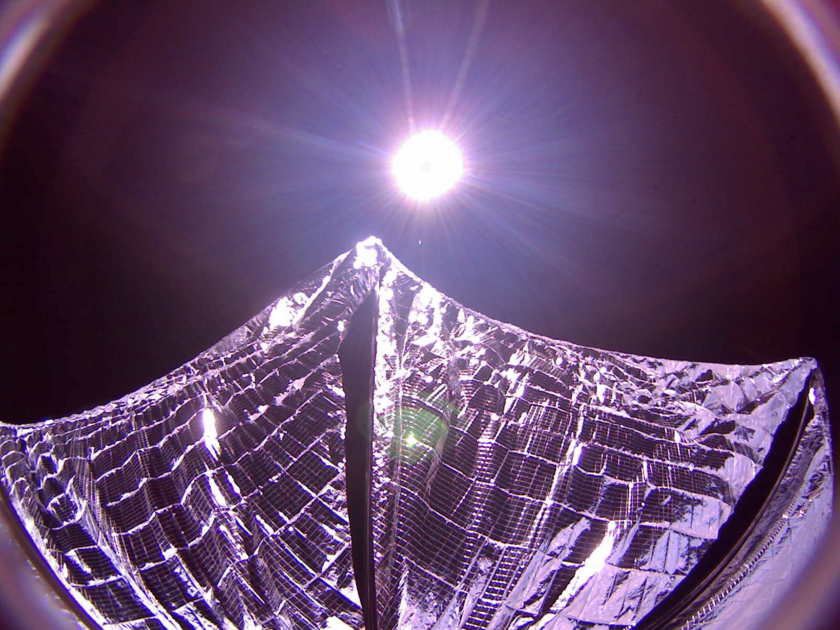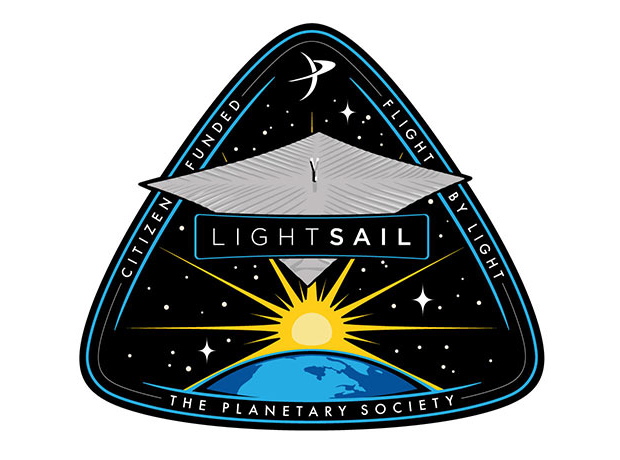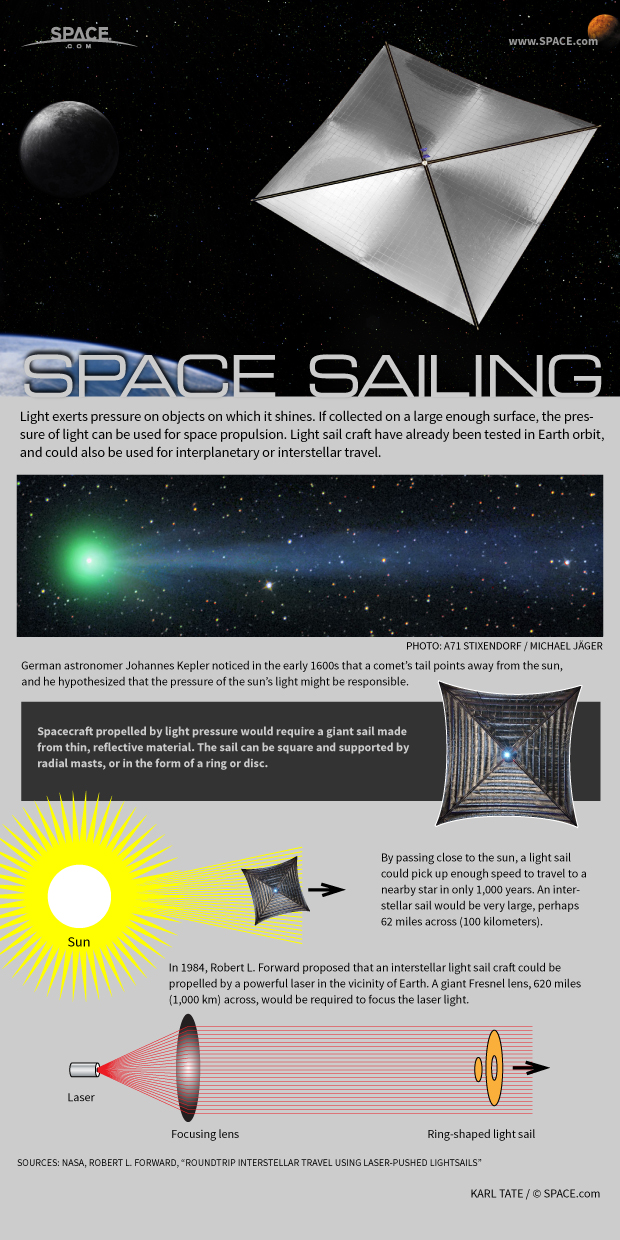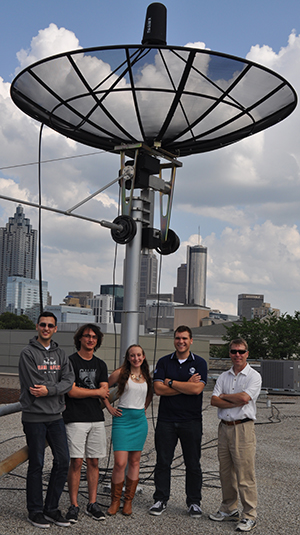
LightSail Solar Sail Ends Test Flight with Fall Back to Earth

The Planetary Society's impressive solar sail experiment has re-entered Earth's atmosphere, ending a successful test flight that sets the stage for an even more ambitious mission in 2016.
Called LightSail-A, the solar sail prototype launched into space on May 20 aboard an Atlas V rocket that also carried the U.S. Air Force's secretive X-37B space plane into orbit. LightSail-A was packed inside a tiny cubesat satellite and unfurled its shiny solar sail on June 7.

"The LightSail test mission is officially over. Following a 25-day stay in low-Earth orbit, the spacecraft tumbled back into Earth's atmosphere Sunday afternoon," posted the Planetary Society's Jason Davis. [The Evolution of Solar Sails for Space Travel (Gallery)]
"A complete image of the spacecraft's solar sails was downloaded on June 9, confirming the mission's primary objective of sail deployment had been met. But before engineers could get a picture from the opposite-side cameras, LightSail's radio began transmitting a continuous, nonsensical signal, and the spacecraft stopped responding to commands," Davis explained.
For the LightSail-A mission, mission operations were conducted at Cal Poly, San Luis Obispo, the prime ground station that commanded the spacecraft.
Rapid demise

Satellite watcher, Ted Molczan in Canada, told Inside Outer Space that the sail's decay was near 55 S, 32 W – about 2,800 miles (4,500 kilometers) east of the Falkland Islands.
Molczan said that orbital analysis reveals that with the spacecraft deploying its solar sails, the craft rapidly spiraled toward its demise.
Get the Space.com Newsletter
Breaking space news, the latest updates on rocket launches, skywatching events and more!
"For an object to descend from orbit so rapidly may seem non-intuitive, but it was due to LightSail-A's large ratio of surface area to mass, which was 500 to 1,000 times that of typical spacecraft and rocket bodies," Molczan said.
What next?
What's ahead is a follow-on solar sailing test flight now slated for late 2016.
According to Mitchell Walker of Georgia Tech, LightSail-B will be packaged within Prox-1, now targeted for a September 2016 liftoff on the Space Test Program-2 (STP-2) mission on a SpaceX Falcon Heavy booster.
LightSail-B will be deployed from Prox-1 once on-orbit, Walker told Inside Outer Space.
The Prox-1 mission will demonstrate automated trajectory control for on-orbit inspection of a deployed CubeSat. The Prox-1 spacecraft has been designed, fabricated and tested by a team of Georgia Tech undergraduate and graduate students who will also be responsible for mission operations.
Close proximity

The Prox-1 will deploy The Planetary Society's LightSail solar sail spacecraft. Prox-1 will fly in close proximity to the LightSail, demonstrating automated trajectory control based upon relative orbit determination using infrared imaging.
Visible images of the LightSail solar sail deployment event will be acquired and downlinked by Prox-1.
The Prox-1 mission will also provide first-time flight validation of advanced Sun sensor technology, a small satellite propulsion system, and a lightweight thermal imager. The mission is funded by the Air Force Office of Scientific Research, through the University Nanosatellite Program.
For a video that captures the Georgia Tech team's thoughts as they monitor the first deployment of the LightSail-A satellite, May 20, visit:
https://www.youtube.com/watch?v=K63So6sn68k
Editor's note: This story was corrected on June 21 to accurately reflect that the primary ground station for LightSail-A was located at the Cal Poly, San Luis Obispo,
Leonard David has been reporting on the space industry for more than five decades. He is former director of research for the National Commission on Space and is co-author of Buzz Aldrin's 2013 book "Mission to Mars – My Vision for Space Exploration," published by National Geographic, with a new updated paperback version to be released in May. Follow us @Spacedotcom, Facebook and Google+. Story published on Space.com.
Join our Space Forums to keep talking space on the latest missions, night sky and more! And if you have a news tip, correction or comment, let us know at: community@space.com.

Leonard David is an award-winning space journalist who has been reporting on space activities for more than 50 years. Currently writing as Space.com's Space Insider Columnist among his other projects, Leonard has authored numerous books on space exploration, Mars missions and more, with his latest being "Moon Rush: The New Space Race" published in 2019 by National Geographic. He also wrote "Mars: Our Future on the Red Planet" released in 2016 by National Geographic. Leonard has served as a correspondent for SpaceNews, Scientific American and Aerospace America for the AIAA. He has received many awards, including the first Ordway Award for Sustained Excellence in Spaceflight History in 2015 at the AAS Wernher von Braun Memorial Symposium. You can find out Leonard's latest project at his website and on Twitter.









